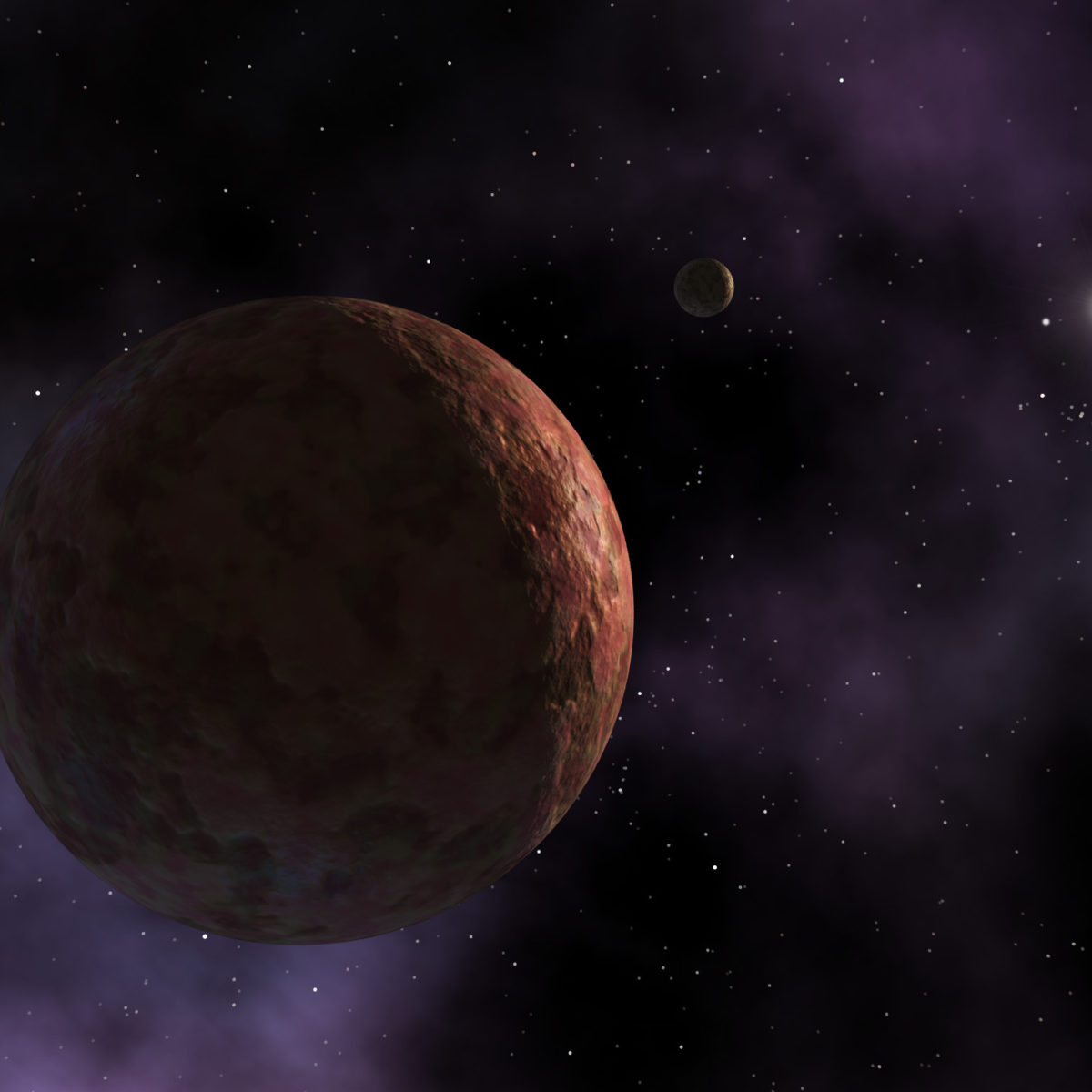All
All
Stories, updates, insights, and original analysis from The Planetary Society.
In their own words
While doing my daily reading today I was struck by the awesomeness of two recent blog posts. Both were composed not by professional bloggers like me but by professional space explorers, one a scientist and the other an engineer.
A fourth moon for Pluto
That's right: Hubble observations have yielded the discovery of a third small body orbiting Pluto and Charon.
The most exciting citizen science project ever (to me, anyway)
A guest blogger here recently rounded up the large number of participatory research projects that are collectively known as citizen science. I think these are all very cool and I encourage you to check them out but none of them has yet inspired me to spend my precious time as grunt labor on a gigantic collective project. Until now.
Observing at the WIYN
On May 5 and 6, I had a run on the WIYN (Wisconsin-Indiana-Yale-NOAO) telescope, a 3.5 m telescope, the second largest telescope on Kitt Peak in Arizona.
South of the Border
The last decade has seen an explosion in our understanding of the solar system with the discovery of the largest Kuiper belt objects (KBOs) of comparable size to Pluto.
The scale of our solar system
Space.com has taken advantage of the infinitely scrollable nature of Web pages to produce a really cool infographic on the scales of orbital distances in the solar system.
Pluto's atmosphere changes really fast!
Pluto's atmosphere has been a subject of fascination for planetary astronomers since -- well, since astronomers first discovered that it had an atmosphere in the early '90s. The interest is partly because it's fascinating that such a distant and cold world is capable of supporting an atmosphere, and partly because the presence of the atmosphere confounds all attempts to measure Pluto's size precisely.
LPSC 2011: Day 1: Small bodies
Here are some of the noteworthy items from the morning's session on
A Planetary Society Trifecta
A Planetary Society trifecta -- that's what Neil Tyson calls this episode of his StarTalk radio show broadcast this week. His guests include the Society's Vice President, Heidi Hammel, and its Executive Director, Bill Nye, (along with the Society's friend, Steve Squyres, Principal Investigator for the Mars Exploration Rovers).
Report from the 2011 New Horizons Science Team Meeting
The annual New Horizons Science Team Meeting was held last week at NASA's Ames Research Center.
Another scientific clarification: Vanth probably not half the mass of Orcus
Earlier this week I got all excited about the Orcus-Vanth system. It turns out there was a math error in the version of the paper that I read, which resulted in the notion that Vanth could be nearly as big as Orcus.
Orcus and Vanth
As part of a big, ongoing project to make a comparison chart of the dimensions and physical properties of solar system objects I've spent the morning tackling the difficult problem of summarizing the physical characteristics of the biggest things that are out there beyond Neptune.
365 Days of Astronomy Podcast: What's in a Science Meeting?
Today the 365 Days of Astronomy podcast aired my contribution, What's in a Science Meeting?, about what scientists do at big meetings like the Division of Planetary Sciences.
DPS 2010: Centaurs and Trans-Neptunian objects
I attended all day Tuesday of the Division of Planetary Sciences meeting on October 5. The afternoon session on Tuesday was a grab bag about different small objects in the outermost solar system.
Eris might be smaller than Pluto after all (but it's still more massive)
Several astronomers pointed their telescope at Eris to watch it pass in front of a background star. Occultations permit precise measurement of the diameters of distant, faint objects, and it turned out that Eris was much smaller than previously thought, so much so that its diameter may turn out to be the same as, or even smaller than, Pluto's.
DPS 2010: Pluto and Charon opposition surges, Nix and Hydra masses, Pluto and Eris compositions
An awful lot of the talks in the Pluto session on Tuesday morning, October 5, at the Division of Planetary Sciences meeting spent more time focusing on how bad weather conditions were during the astronomers' attempts to view Pluto as it occulted background stars than they did on any measurements or science that came out from the data.
Naming X: A contest for kids to name small bodies
A contest has just been announced that appears to create a pathway for schoolchildren to suggest names to the International Astronomical Union for minor planets -- all those small things in the solar system that don't orbit the eight big ones.
Hubble turns 20
Tomorrow is the 20th anniversary of the launch of the Hubble Space Telescope. It's hard to believe it's been going strong for so many years.
Quaoar: A rock in the Kuiper Belt
The paper I'm writing about today,
Programming Note: The Pluto Files
This is just a brief note to advertise this evening's edition of NOVA on public television here in the U.S. The show is


 Explore Worlds
Explore Worlds Find Life
Find Life Defend Earth
Defend Earth


 Sun
Sun Mercury
Mercury Venus
Venus Earth
Earth Mars
Mars Jupiter
Jupiter Saturn
Saturn Uranus
Uranus Neptune
Neptune Small Bodies
Small Bodies
















